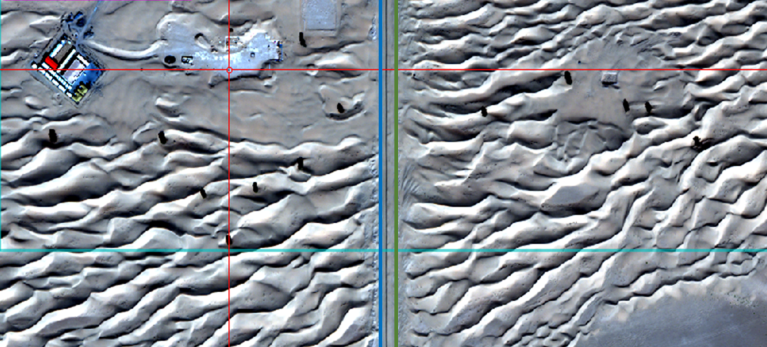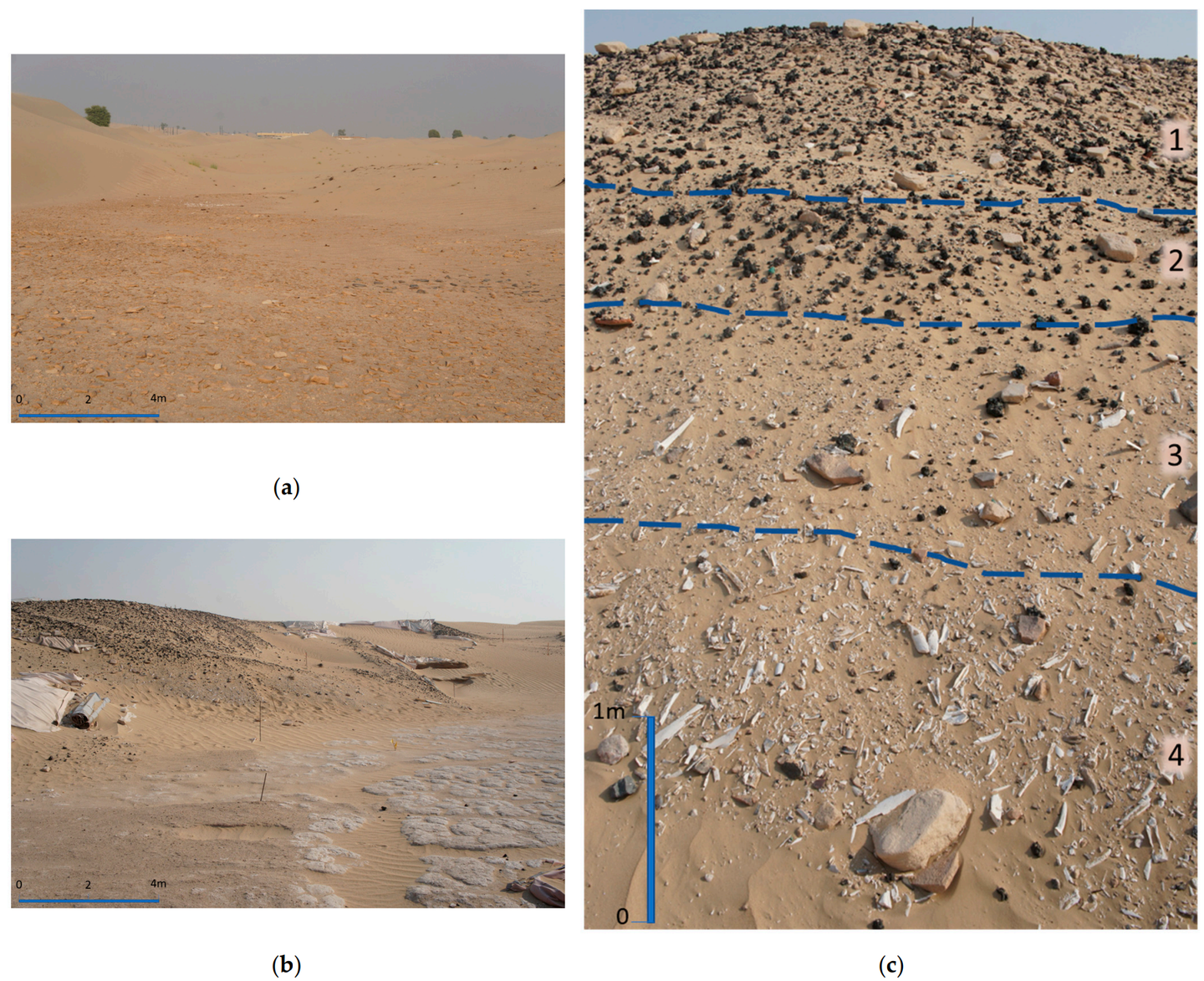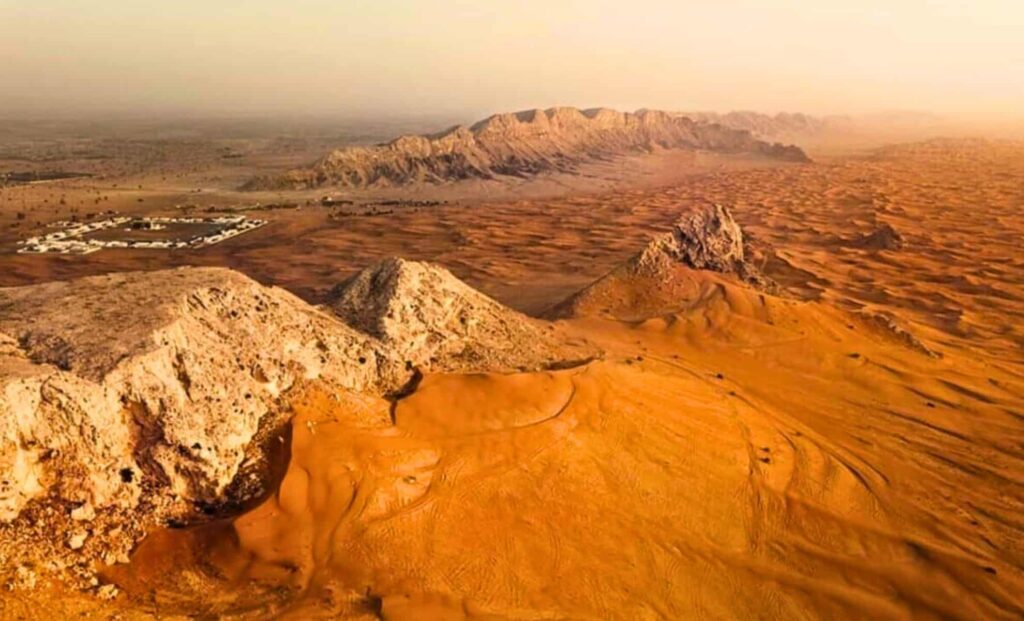In the blistering emptiness of the Rub’ al Khali desert—where temperatures soar above 120 °F (48.89 °C) and winds sculpt dunes the size of skyscrapers—a quiet revolution is taking place. No tents. No excavation crews. Just a constellation of satellites and lines of code scanning the sand for secrets.
Archaeologists, long hindered by the punishing conditions of the Arabian interior, are now turning to artificial intelligence to search where the human eye and shovel cannot. In a region often associated with silence and stillness, digital whispers are revealing echoes of ancient life.
The discoveries are not speculative. Recent surveys in the United Arab Emirates, powered by a blend of synthetic aperture radar (SAR) and machine learning, have revealed signs of human settlements stretching back 5,000 years. These aren’t just blips on a map—they’re potential chapters of history, previously erased by time and sandstorms.
Digital Archaeology in the Dunes
At the center of this transformation is Saruq Al-Hadid, an archaeological site first excavated in 2002 near the southern edge of Dubai. The site, rich in slag, ceramics, and metalworking debris, has long hinted at a thriving Bronze Age hub. Yet most of its expanse remained hidden beneath mobile dunes—until researchers applied SAR imaging and deep learning models to map it remotely.
The team behind the project, led by scientists from Khalifa University and Sorbonne University Abu Dhabi, published their findings in Geosciences. Using radar data from the ALOS-2/PALSAR-2 satellite and ultra-high-resolution WorldView-3 images, they trained AI systems to recognize features typical of human settlements—linear paths, clusters, material density.

They weren’t guessing. The algorithm was fed known archaeological patterns and ground-truthed data, allowing it to distinguish between natural formations and human structures with a resolution of up to 50 centimeters. When the predictions were later verified by field teams, many of the suspected sites aligned with buried features previously missed by traditional surveys.
Beyond Dubai: Mapping Ancient Trade Routes
What began as a localized project is now expanding across the Arabian Peninsula. Researchers are using the same methods to trace ancient trade networks that once connected oases and coastal settlements across what are now some of the most inhospitable environments on Earth.

“You’re not just finding isolated structures,” said Dr. Diana Francis, a lead investigator on the project. “You’re seeing corridors of human movement, economies, migration routes—entire civilizations that had adapted to live in the desert long before modern infrastructure.”
These findings support historical theories about the Incense Route, a trade system that moved frankincense and myrrh from southern Arabia to the Mediterranean as early as the 3rd millennium BC. Until now, much of that system was hypothetical, drawn from sparse written records and a handful of excavated sites. With SAR and AI, those invisible highways are beginning to reappear.
The Machine-Learning Revolution in Archaeology
AI has already shown promise in other parts of the world. In 2023, researchers from Yamagata University in Japan used it to identify new Nazca Lines in Peru 21 times faster than manual analysis. What’s different in Arabia is the sheer difficulty of the terrain—and the scale of what remains undiscovered.
SAR’s advantage is its ability to penetrate sand and dry soil, unlike optical imaging, which struggles with glare and distortion. When paired with AI, it creates a powerful tool that can process vast landscapes quickly and highlight anomalies in the data that might otherwise go unnoticed by the human eye.
Still, the technology has limits. Modeling accuracy depends on clean satellite data, which is often degraded by dust, wind, and shifting topography. There’s also the challenge of false positives—natural features mimicking human patterns. To address that, researchers are integrating neural networks with backpropagation algorithms, refining predictions with every verified hit or miss.

